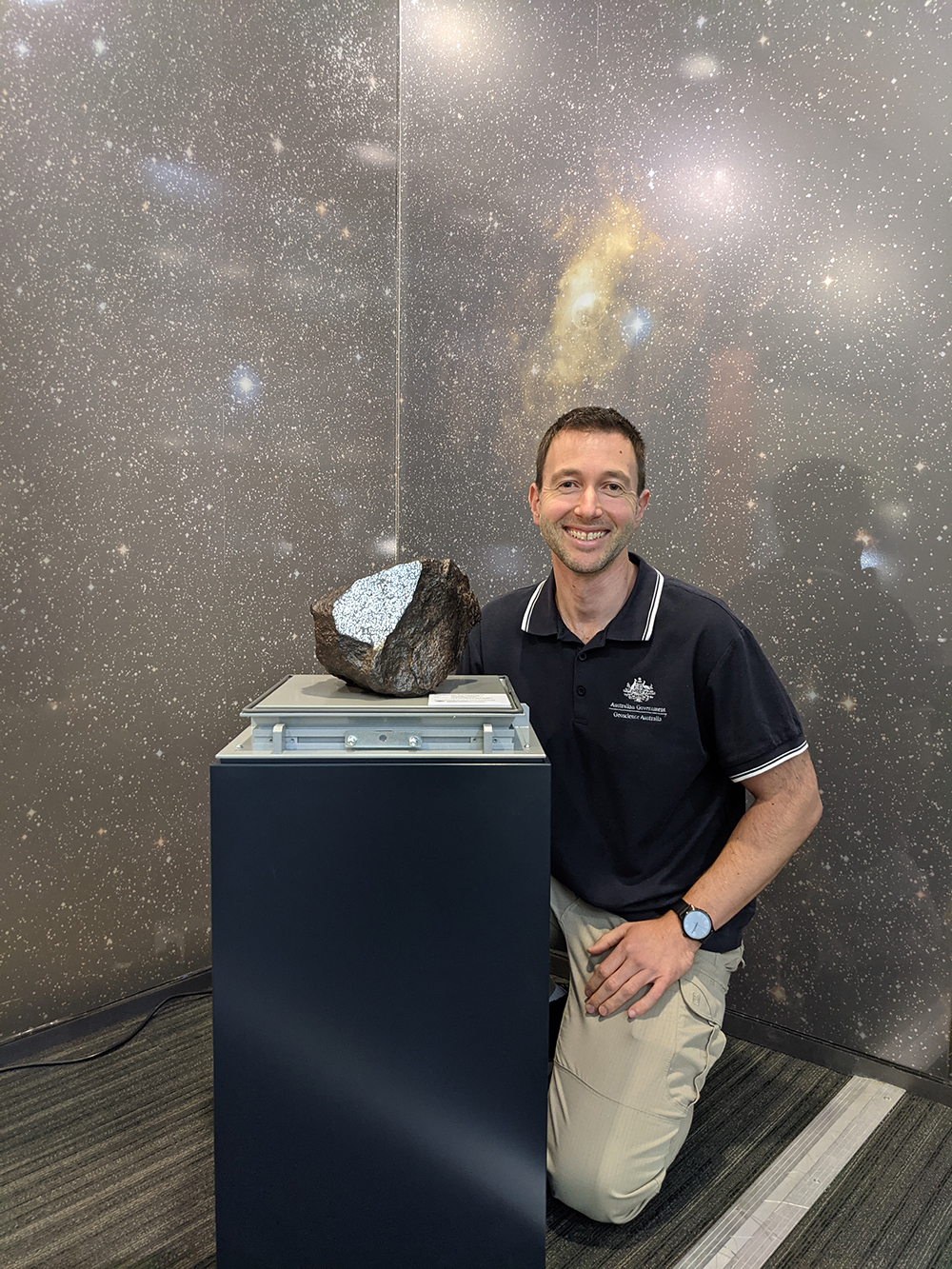The Georgetown (iron) meteorite has found its home at Geoscience Australia!
7 April 2021
Thanks to support from the Australian Government, the largest piece of the Georgetown (iron) meteorite ever discovered will educate and inspire new generations of Australians who visit Geoscience Australia.
When two friends Paul McRae and John Miller were fossicking for gold in July 2016 near the Georgetown area of Queensland, they unearthed a 4.5-billion-year-old treasure originating from the asteroid belt.
Unsure of whether it was just an ordinary rock or something more, the two men brought the specimen to Geoscience Australia in 2017 for expert advice.
Upon inspection, Geoscience Australia curator Steven Petkovski said the unique textures made it easily distinguishable as an iron-nickel meteorite.
“We receive a lot of enquiries about finds that are otherwise ordinary rocks, so this was a very exciting moment for our Collections Team,” said Steven.
Further analysis indicated that the specimen was the largest example of an incredibly rare meteorite, first discovered in 1988, and named the Georgetown (iron).
Steven said at 24.3 kilograms it is the largest confirmed example of this rare type of meteorite, which appears to have broken up into many pieces before hitting Earth’s surface.
“It is one of only six officially confirmed, named, and classified examples of this unique specimen in the world and is of extreme scientific significance,” said Steven.
Confident that such a rare meteorite should be held within Geoscience Australia’s National Mineral and Fossil Collection, Steven sought support from the National Cultural Heritage Account administered by the Department of Infrastructure, Transport, Regional Development and Communications.
Thanks to this funding, Geoscience Australia was able to officially acquire the meteorite in August 2020.
“By acquiring this very rare specimen, we can ensure it is available to scientific researchers to make new discoveries about the origins of the solar system, as well as to inspire and educate the viewing public.” said Steven.
Geoscience Australia is the authoritative custodian of geoscientific data and physical collections for the benefit of all Australians. As such, the specimen will be part of the National Mineral and Fossil Collection for Australians to enjoy and learn from well into the future.
The Georgetown (iron) meteorite is on public display at Geoscience Australia, along with other must-see collection items like the Lunar Touchstone.
Additionally, the story of the Georgetown meteorite is being celebrated via an online exhibition.

Geoscience Australia curator Steven Petkovski with the Georgetown (iron) meteorite.




